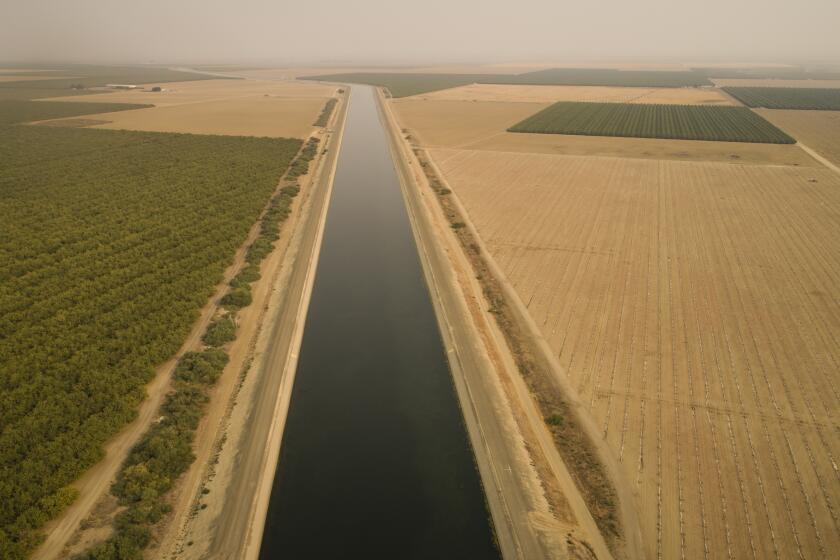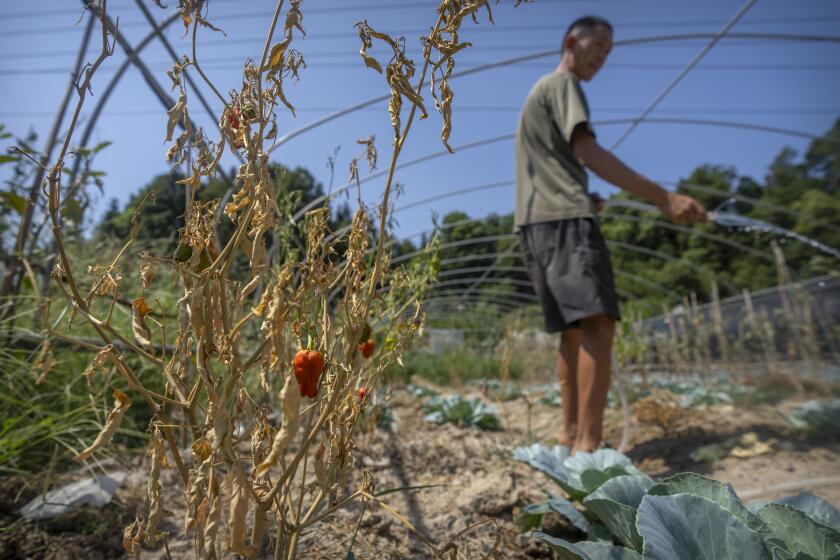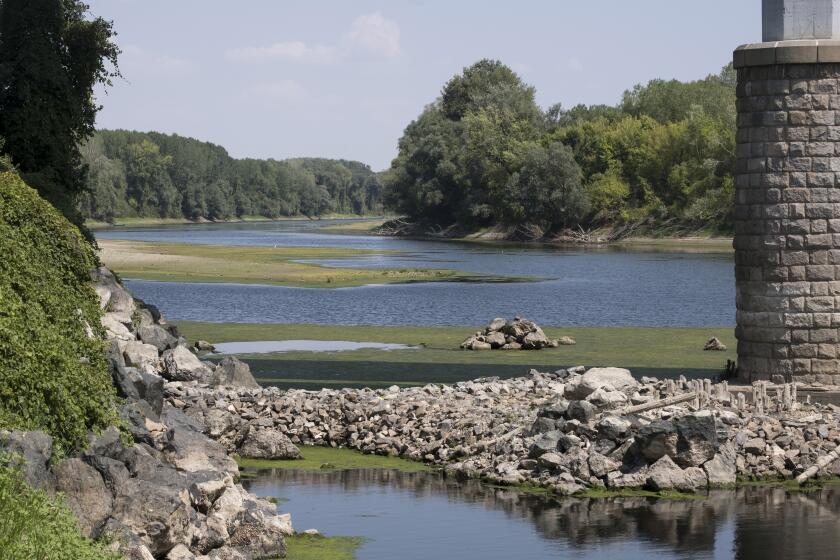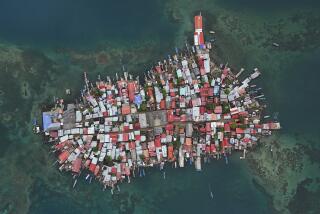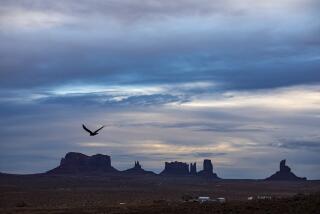High in the Andes, a crucial lagoon vanishes amid driest conditions in almost 50 years
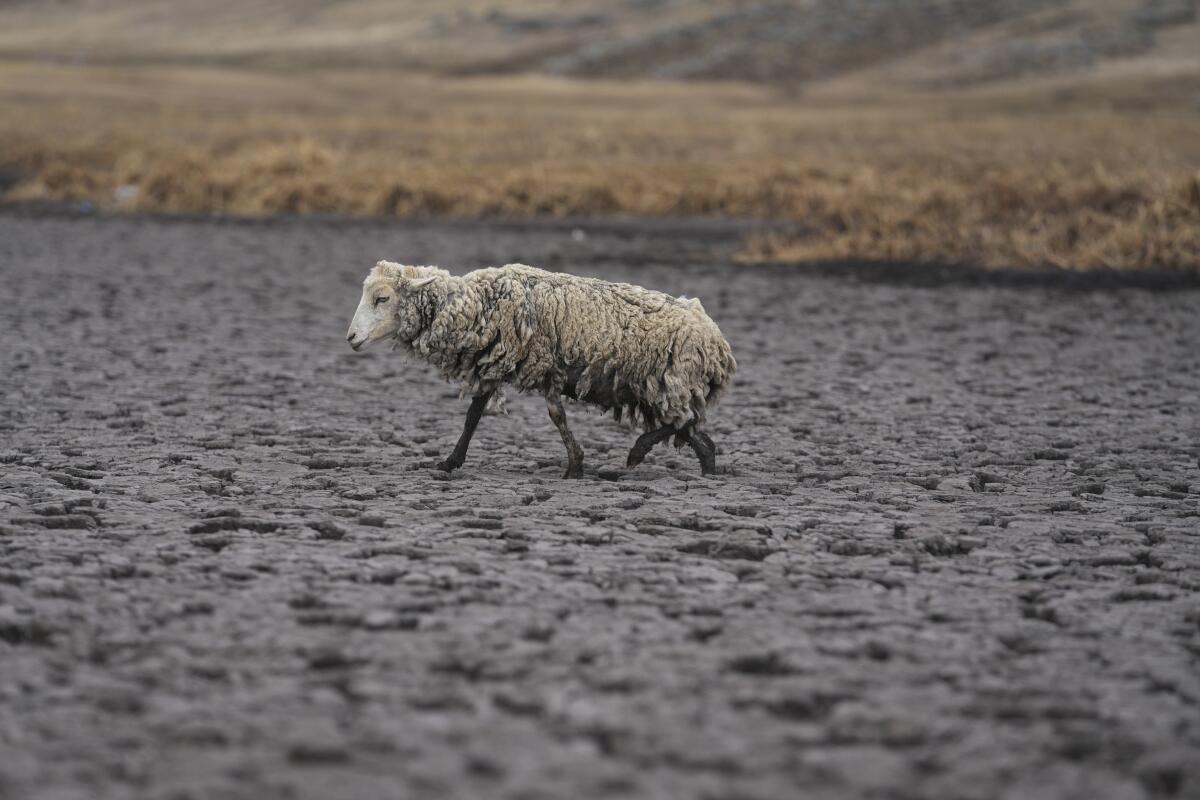
- Share via
CCONCHACCOTA, Peru — From her home under the baking sun of Peru’s southern Andes, Vilma Huamaní can see the small Cconchaccota lagoon, the axis of her community’s life. It has been a source of trout, fun for children eager to swim, beauty as flamingos flew from over the mountains and water for thirsty sheep.
Nowadays, all Huamaní sees of the lagoon 13,120 feet above sea level is a plain of cracked and broken soil surrounded by yellow grass.
“It has totally dried up,” she said.
The rainy season in this part of South America should have started in September, but the area is experiencing its driest period in almost half a century, affecting more than 3,000 communities in the central and southern Andes of Peru.
A light rain last week — only the second in almost eight months — prompted residents to set bowls outside to collect water. The drops lifted dust as they hit the ground, and by the next morning, the sun had evaporated the scant moisture.
The bodies of sheep and lambs can be found among sparse yellow grass. The planting of potatoes, which is the only crop that grows in Huamaní’s village, has been delayed, leading many to expect food shortages in the coming months because people are already feeding themselves with dehydrated potato reserves.
The Department of Water Resources announced an initial allocation of just 5% of requested supplies from the State Water Project.
“Every day, I ask — I hope — the rain falls. ... When there is rain, the grasses grow, the potatoes [grow],” said Huamaní, 38, who moved with her four children from Peru’s capital, Lima, to Cconchaccota in 2020 during the height of the COVID-19 pandemic.
The absence of rain in part of the Andes is a result of the La Niña phenomenon, occurring in 2022 for the third consecutive year, according to the United Nations’ meteorological agen-cy. The drought is also hitting parts of Bolivia, Paraguay and Argentina.
Yuri Escajadillo, a climatologist with Peru’s National Meteorology and Hydrology Service, said an index used to measure droughts categorized the region as “extremely dry.”
“It is a record value,” Escajadillo said.
Scorching heat during China’s driest summer in six decades has wilted crops and left farmers struggling.
In Cconchaccota, there is no drinking water, sewage or telephone service. People drink from a nearby spring, though it sometimes dries up too. Residents say their appeals to local authorities for help went unanswered for more than two months.
Grisaldo Challanca, a young farmer, used his cellphone to record videos and prepare a report about the drought. He posted it to Facebook after climbing to nearly 14,800 feet above sea level in order to get an internet connection.
The long-delayed response from the regional authorities arrived last week with the delivery of packages of fodder oats for the surviving sheep, cattle, alpacas and llamas.
Europe is facing one of its worst droughts ever, as rivers dry up, farms go fallow and vineyards roast.
“The animals are all bone,” said John Franklin Challanca, a 12-year-old shepherd whose family has lost 50 sheep.
The Andes region is highly sensitive to climate migrations because of droughts, tropical storms and hurricanes, heavy rains and floods, according to the latest report by the U.N.’s Intergovernmental Panel on Climate Change.
“Global warming has caused glacier loss in the Andes from 30% to more than 50% of their area since the 1980s. Glacier retreat, temperature increase and precipitation variability, together with land use changes, have affected ecosystems, water resources and livelihoods through landslides and flood disasters,” the report says, adding that summer rainfall appears to be decreasing in the southern Andes.
Small farmers in parts of the Andes in Peru and Bolivia are praying for rain. Prayers are held on the shores of Lake Titicaca, which is shared by both countries, and on mountains that Indigenous communities consider gods.
Toward a more sustainable California
Get Boiling Point, our newsletter exploring climate change, energy and the environment, and become part of the conversation — and the solution.
You may occasionally receive promotional content from the Los Angeles Times.
In the only evangelical church in Cconchaccota, Rossy Challanca said the drought was punishment “for the sins of man” and a clear sign that the end of the world is soon to come.
Climate experts say the lagoon could have dried up because it was less than three feet deep, depended exclusively on rainwater and was under strong solar radiation.
Wilson Suárez, professor of mountain hydrology and glaciology at Peru’s La Molina National Agrarian University, said that’s “an ideal cocktail” for the small lagoons in high Andean areas to dry up.
“This has to put them on notice that times are changing,” Suárez said of residents who have long depended on the lagoons for watering their livestock. “A drought is not easy to handle. … The climate is changing.”
More to Read
Sign up for Essential California
The most important California stories and recommendations in your inbox every morning.
You may occasionally receive promotional content from the Los Angeles Times.
